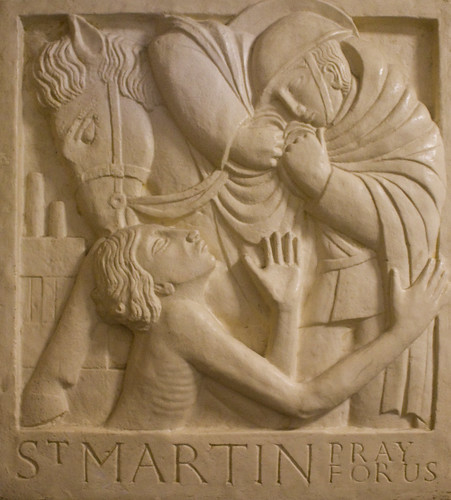 |
| Window in a church in Los Angeles. |
But, I do love the stories and legends associated with the saints. Here is one about St. Abban.
 | ||
| Photo by Arrr! | Steve Gregory |
He was tending the cows belonging to his foster family when he was but a lad. A wolf approached. Abban communicated with the animal and learned that he was starving. He allowed him to eat one of the calves. Later, the family was distraught over this. Abban told them that if God could create the calf, when one did not exist before, He could surely make another calf out of nothing now. And miraculously the calf was restored. Amazed, the family took Abban to the King, saying that they were agreed that Abban should worship the God who did this thing for him. So when Abban was twelve years old he went to live with his mother's brother, Bishop Iubar, and thus began his religious training. He seemed to understand the nature of God while those around him were astonished by it. Of course they were amazed by the miracle, but to this young boy, it was nothing to marvel at. Of course God could do that. He's God!!
Killabban (literally the church of Abban) in County Laois, is supposedly where St. Abban is buried. But he is associated with many places in Ireland, so who can know? Abban lived in the 5th century, or maybe the 6th century, or maybe he lived to be 300. All that is said about him.















































